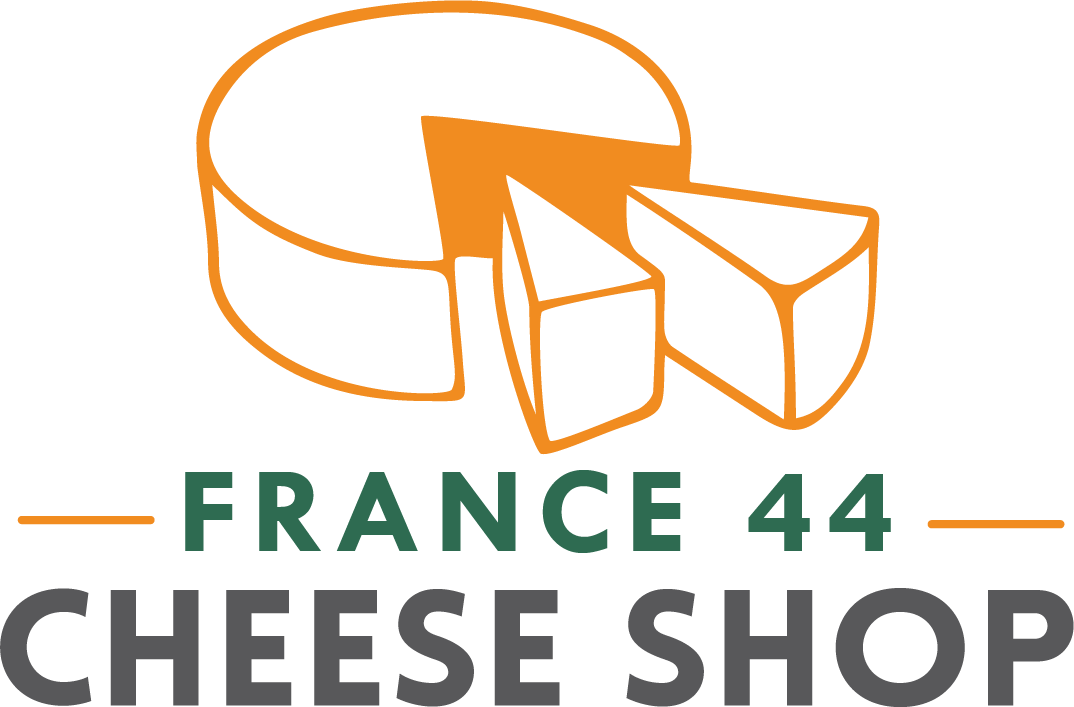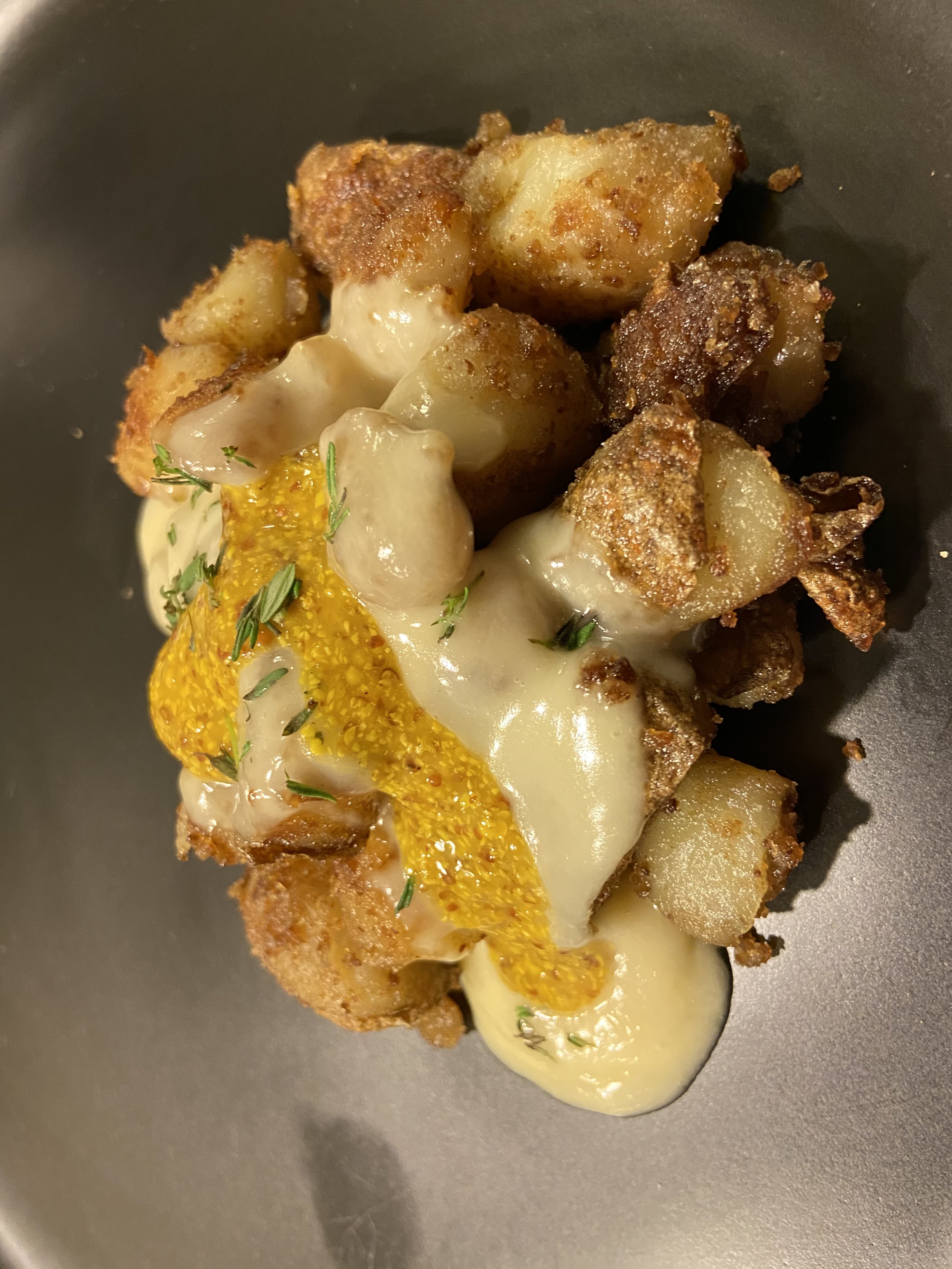by Jared Kaufman
Serves 4
It’s cold out there, people. Let’s take a cue from folks in the European alps, who know a thing or two about snowy weather, by making this cheesy potato dish that blends Swiss fondue with French tartiflette — hence “fondue-tiflette.”
(A note for the sticklers among us: Tartiflette recipes typically call for reblochon cheese, a funky washed-rind softie that’s difficult to find in the U.S. due to laws that restrict the importation of young raw-milk cheeses. But don’t confuse this for time-honored tradition — tartiflette was only invented back in the ’80s, as a marketing tactic to sell more reblochon!)
This recipe captures the spirit of tartiflette by bringing together strong cheese with potatoes, wine, and herbs, but also with the luscious and silky texture of a good cheese fondue. For my cheeses, I chose Risler Square Raclette, a traditional Swiss melter; Fontina Val d’Aosta, the real stuff from up in the Italian alps; and some classic Taleggio. For the firm cheeses, you could also use Ogleshield, Challerhocker, or our newest cheese, Marbré des Alpes; for the soft cheese, saltier options like Époisses, Red Hawk, or Grayson would also be delightful.
If you’re not a fan of pungent cheeses, don’t turn your back on me now! The flavors mellow out as the cheeses melt, and, when combined with the potatoes and wine and herbs, they morph into a tangy, sweet-and-savory, belly-warming meal. Trust me on this one.
From France 44:
• Two ⅓ lb. chunks of funky melting cheeses, such as the ones listed above
• ⅓ lb. washed-rind soft cheese, such as the ones listed above
• ½ c. duck fat
• ¾ cup dry white wine, such as Loimer Lois Grüner Veltliner
• Whole-grain mustard, such as American Spoon Whole Seed Mustard or Delouis Fils Old Fashioned Mustard
From your pantry:
• 2 lb. russet potatoes
• 2 T all-purpose flour
• 2 cloves garlic, grated
• 1 tsp. chopped fresh thyme, plus more to garnish
• Salt to taste
Instructions:
Begin your potatoes by scrubbing them clean, then cutting them into 1-inch cubes.
2. Cook your potatoes. In a wide pan over medium heat, heat the duck fat until one test potato sizzles when dropped in. Add the potatoes and fry until they’re crispy and golden-brown. This might take awhile, so…
3. Meanwhile, prep the cheese. Grate the firm cheeses into a bowl. Cut the soft cheese into small cubes (½ inch should do the trick) and add them to the bowl with the hard cheeses. Toss with flour to coat.
4. Make the fondue sauce. Into a saucepan or small Dutch oven over low heat, pour the wine. When it begins to simmer, slowly add in the cheese, small amounts at a time.
5. Stir the cheese constantly to help it melt evenly. (The firmer cheeses will likely melt more quickly than the softies, so you can help things along by gently breaking up the pieces that remain.) Once it comes together, it’s ready to use immediately, but you can set it aside if you need to finish other components.
6. Once the potatoes are just about crispy, add garlic, thyme, and salt to the pan and toss around to coat. Continue frying for just a minute or two longer. Remove to a paper towel-lined plate.
7. Time to assemble! Arrange the potatoes on your serving plate and pour the fondue over the top. (The fondue should be hot! If you had to set it aside in step 5, be sure to gently heat it back up on the stove — while stirring constantly — before you assemble.) Drizzle some whole-grain mustard on top, garnish with thyme, and serve with a nice glass of the white wine.





